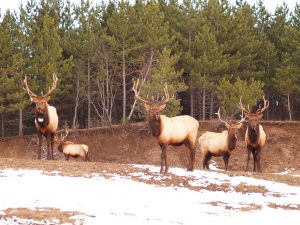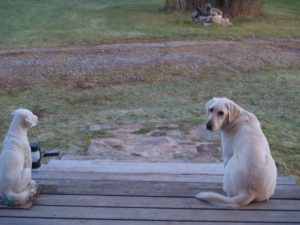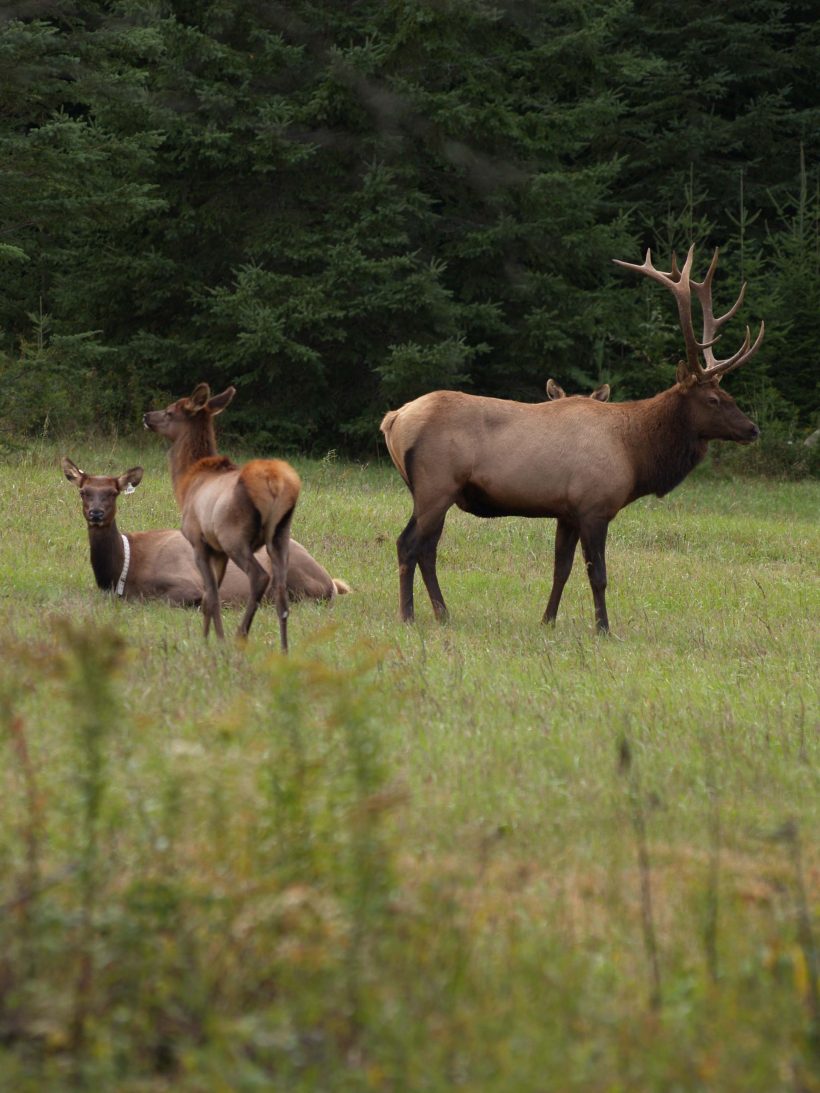Slow and Steady 2010
The responses to the elk management proposal posted on the EBR (Environmental Bill of Rights) are in and the Ministry of Natural Resources is moving ahead in consultations with stakeholders that include, among many, aboriginals, farmers, hunters and outdoor folk of varied backgrounds. A recent meeting in Bancroft to discuss details of the proposed elk strategy included participants from the Ottawa area to Peterboro and south to Belleville. Items on the agenda included: 1. target setting; 2. harvest allocation; and 3. the elk removal authorization process.
Vince Ewing, Bancroft Area District Manager, said that they have had similar meetings with the farmers and the Algonquins. “We have to respect the treaty rights,” said Christie Curley, Policy Advisor for the MNR, who is heading up the elk management program, “with respect to aboriginal interests.” When asked to clarify those rights Curley said that was unknown. Ewing said that the ministry had received no response from the Algonquins as yet.
Doug Howell, of the Quinte Elk Restoration Committee, was concerned that elk need to be “more highlighted.” He wanted to emphasize the special nature of elk and the elk hunt. “They aren’t the same as other ungulates and should be treated with more special attention,” he said. The ministry is exploring unique hunting strategies followed in other North American jurisdictions such as Arkansas, Pennsylvania and Michigan where elk are hunted. For example, in Tennessee the hunters were invited to an elk camp where they celebrated the uniqueness of elk hunting and learned strategies for elk hunting.
Curley suggested that of the 4 areas targeted for elk re-introduction in Ontario, only the Bancroft/ North Hastings herd appeared large enough to sustain a hunt at present. Dr. Rosatte’s research and several studies by students have drawn a clear picture of the elk population and its geographical locations.
Although 2010 had initially been suggested for the first legal elk hunt in Ontario since the ‘70s Curley stated that this is now 2010 and with many details to be considered that didn’t seem too likely. Another attendee suggested that marketing is very important and should be well planned and presented. Thus the first hunt may come to fruition in 2011 although my crystal ball wouldn’t be surprised to see that occur in 2012. As the old adage says, “haste makes waste.”
Other details discussed included when (September?), number of tags, bull/cow, firearms (including archery), reporting issues, party hunting, lottery/draw…In a lottery one may purchase multiple tickets whereas a draw permits only one. Winners would then have to purchase an elk hunting license. Someone suggested that a winner be permitted to invite 3 others to join him/her for the hunt. If the hunt takes place when the elk are bugling, calling becomes an important hunting skill. Dogs, if used, might well scare the elk away. Food for thought. As for reporting issues Curley noted that reporting is easier (as in the turkey phone in) whereas registration requires the animal be presented for measurements.
Historically these animals come from a population of unhunted animals. Norm Layland, MNR retiree and current outfitter, suggested that mature cow elk have more sway over a herd than a bull. He noted that these cows often lead herds into farmers’ fields and if they are hunted it might help alleviate some of the farmers’ frustrations.

As for Minister Bentley’s Omnibus Bill that effectively altered the Fish & Game Conservation Act by permitting the minister to authorize the harassment/removal of nuisance elk Curley did say that such exists for deer but no process has been developed for elk. Ewing said hopefully one would not be in place until after the first elk hunt. Curley did say it could take as short a time period as 6-8 months for such a process to be developed.
Other considerations include permission to hunt on private land, Crown land opportunities, tag allocations….Although the KISS system seems advisable (keep it simply successful) many readers know from experience that simplicity isn’t always easy. As Curley said, the ministry is building the elk hunt from scratch. There are many pieces to this puzzle and it will take a lot of time, energy, thought, research and discussion before the picture is fully developed. Stay tuned.
ANGLER & HUNTER
If you were watching Angler & Hunter TV on January 9 you would have seen local nimrod Jim Bamford and his lab Sam guiding Cam Brownson and the Angler & Hunter TV crew around Pelee Island during one of the annual pheasant hunts. The island has much pheasant hunting history involving a number of US Presidents.

Shortly before A&H you may have watched the first show of the new Canada in The Rough season featuring Thomas Pigeon’s new co-hosts and owners the Beasley Brothers. For those so inclined, 7-8 am on Saturday mornings features both of these entertaining shows on Global.
Elk Shot
Joseph Kincaid’s worst nightmare may have come to fruition in Cashel Township when he realized that the white-tailed doe that he shot was actually a cow elk. He turned himself in and subsequently Justice of the Peace Barry Moran fined him $500. In addition, Kincaid donated $500 to the North Hastings High School Resource Management Fund.
AND FINALLY…When Charles McCowan returned to his truck parked in front of a mini-mart it was gone. He reported it stolen to the police. Subsequently McCowan found that his Boxer had slipped the truck out of gear and it had safely navigated its way across a road to a fast food outlet. Was the dog trying to tell him something?
Photo – SAM
